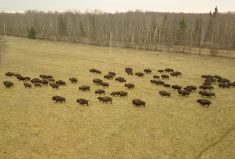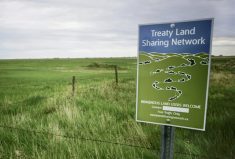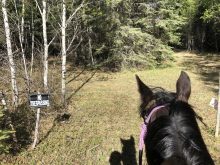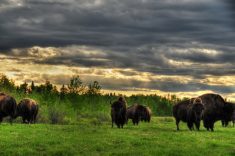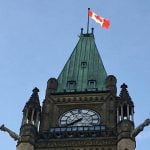This is the fourth story in a five-part series. Read the first, second and third stories here.
[Updated Oct. 18, 2022]
There is a forest meadow on my family’s lease land that changes constantly through the growing season. It’s one of my favourite places. After the spring rains, lush green grass soon overtakes last year’s dead vegetation, and the poplars leaf out. Later, it’s a riot of wildflowers. As the summer wears on, the grasses head out, seedheads dusted pink. Trail cams have caught wildlife including bears, elk and plenty of deer. There’s a bear den on the south side of a hill overlooking the meadow, and a nearby dugout supports waterfowl. You never know what you might see.
Read Also
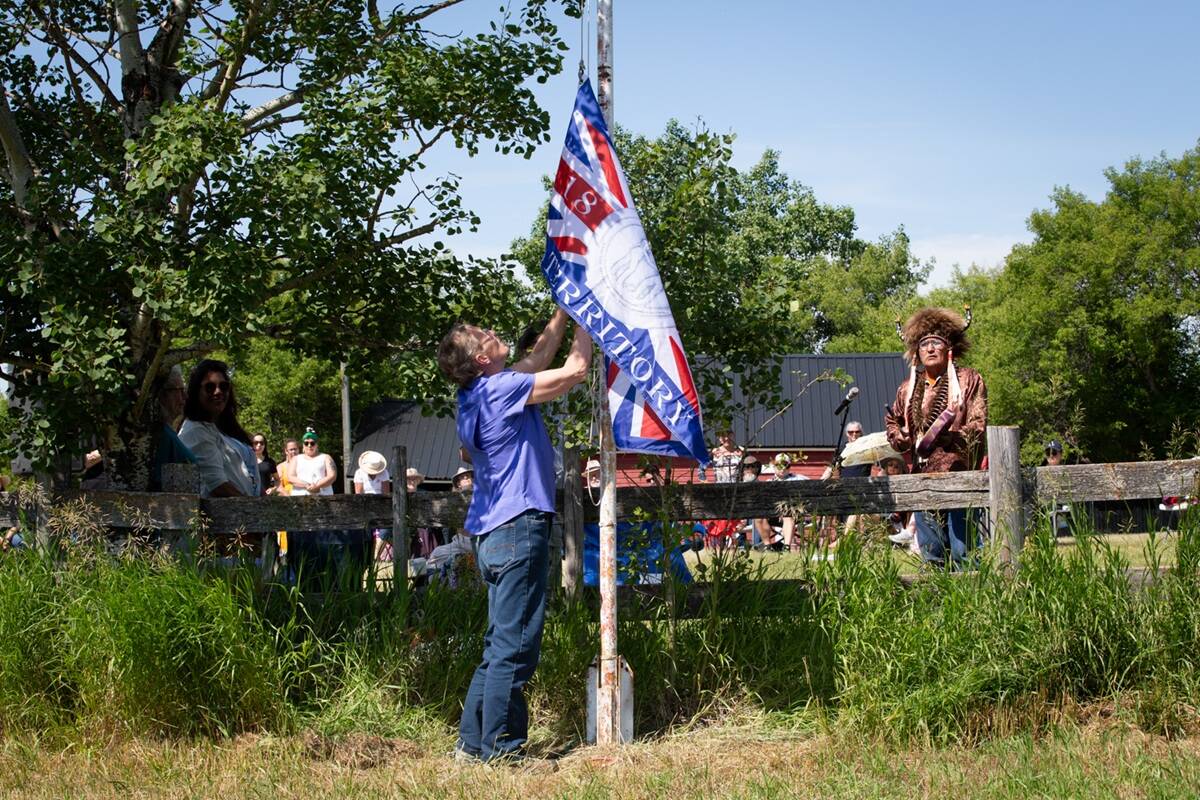
Treaty Land Sharing Network expands reach in Saskatchewan and Alberta
The Treaty Land Sharing Network, which connects land holders with First Nations and Metis people, has expanded since it began in 2018
So when Autumn Baptiste says that it’s a different experience every time she goes out on the land, I think I understand what she means.
“I don’t know how to explain it. When you’re out on the land, it feels like you’re taking a breath.”
Autumn hunts and gathers medicine on the community land belonging to Thunderchild and Red Pheasant First Nations. When I ask her how she’d respond to landholders who want to control access to their land to prevent damage and keep their livestock and families safe, she says she wants them to feel safe, too.
“I understand where they’re coming from.”
But when it comes to the new trespassing legislation, she feels the provincial government should have consulted more with Indigenous people. She thinks it creates a barrier for those trying to build relationships between Indigenous people and landholders “because it implies that people who are going out onto the land to use the land have very different intentions than what they do.”
The possibility of a court challenge to the new legislation is smouldering, with the Federation of Sovereign Indigenous Nations (FSIN) and Treaty Commissioner of Saskatchewan indicating they are lining up their legal ducks.
The trespassing legislation is just the latest government action that FSIN and the Treaty Commissioner see as violating treaty rights. Another is the sale of Crown lands, which has shrunk the land base on which Indigenous people can exercise their treaty rights.
While Indigenous land users still have access to some Crown land, it’s possible the new legislation could curtail that, too. For example, as FSIN Chief Bobby Cameron told the Star Phoenix this winter, some Crown land may only be accessible through private land.
Jim Range, for one, isn’t betting the new legislation will survive a court challenge. The courts have ruled in favour of honouring treaties in the past, he says, and he expects them to do so again in this case.
Autumn believes the new legislation “will give people that feeling that they can take (the law) into their own hands,” something she sees as very dangerous. It’s worth asking, given how busy rural RCMP forces already are, who is expected to enforce this legislation? Confronting trespassers, or suspected trespassers, is already a regular activity for many civilians in my area, and perhaps we don’t need more encouragement.
Personally, I don’t know what’s going to happen next. I’ve covered few topics in my career that felt so close to home or left me feeling as conflicted as trespassing and this new legislation. I was initially hesitant to even take on this story, but in the end, I couldn’t resist the siren call of such a messy topic.
When I began working on this story, I was almost fully behind the legislation, although I wasn’t sure how enforceable it would be. After talking to everyone (particularly Autumn) and doing more research, I can see more to the issue. I still want the new legislation to work, but I don’t want it to worsen the already-tense relations between farming and Indigenous communities, or encourage more conflict between frustrated landholders and others. This may be a case of wanting to eat my cake and have it, too.
Sharing the land
A big question this province (and much of the country faces) is how to build back relationships between Indigenous communities and their neighbours. Where do you go after you’ve acknowledged the historical injustices that linger today? Much of the solution, in rural areas at least, is going to centre on land access. But how do you ensure land access for Metis and First Nations people in a practical way that also ensures the safety of everyone on the land, especially when we’re talking about hunting or potentially cranky livestock?
Autumn is involved with a group that aims to do just that. The Treaty Land Sharing Network comprises Saskatchewan landholders — including farmers and ranchers — who are offering land access to Indigenous and Metis people to exercise their treaty rights.
The people in the network are “showing that the treaty relationships aren’t severed. They can be reconnected,” says Autumn.
Landholders who join the Treaty Land Sharing Network agree to allow land users to exercise the full range of their treaty and inherent rights, unless it’s unsafe to do so due to other land uses (for example, hunting on a small land parcel). Landholders and land users also agree to the same protocols such as foot access only.
Landholders can list any characteristics that might be of interest, such as sweat rocks, wildlife or plant species considered medicine. The Treaty Land Sharing Network then posts this information to its website. Through the network, land users get the landholder’s contact information, so they can get a heads up about any other issues and learn more about the land, Autumn adds. Landholders can also post signs stating they are part of the network.*

Autumn says they’re still making connections, but the response has been great so far. The network has also been a way to have conversations about the treaties, she says, and the intentions of the signatories, which was to share the land, she says.
Is this the solution to all the issues around land access and trespassing, or even around reconciliation? No — but, again, I don’t think there is a single solution. I don’t know how many landholders will sign up for the network, but what makes me hopeful is that it acknowledges the public good and relies on building good will. A person might argue that’s also what makes it fragile, but I think that building and maintaining good will is one of the few things that works in the long run. More on that next week.
Read the final chapter here:
*Update: This story originally stated that landholders joining the Treaty Land Sharing Network could specify “any restrictions” on land access, which is incorrect. The story has been clarified accordingly. We regret the error.




